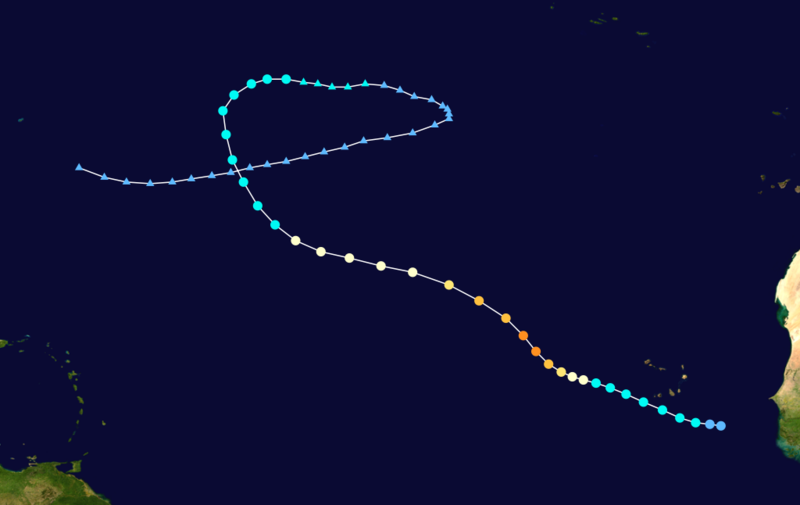Supposedly this was a very active Atlantic hurricane season compared to past years. But how reliable are those comparisons? Modern technology gives hurricane watchers three huge advantages for hurricane detection.
- Spatial detection extent
- Spatial detection resolution
- Sampling frequency
For example, consider major Hurricane Julia.
Julia was a major hurricane for only a few hours, and was thousands of miles off shore from North America. It is quite probable that prior to satellites, Julia would not have been detected as a major hurricane. Seventy years ago she may not have been noticed at all.
Storms are given their final status based on their peak sustained winds and minimum pressures during their lifetime. Modern hurricane watchers get continuous updates of wind speed and pressure across a very fine grid. They can monitor the entire ocean. These improvements in technology almost guarantee that peak measured wind speeds and minimum pressures will be higher/lower than in the past – as well as the number of storms detected.
1933 was the second most active season after 2005, but they were not able to find storms far out in the Atlantic. How many more storms were missed? Were storm peak wind speeds and minimum pressures actually recorded?




As I commented before:
If I leave the fan going in my barn during hurricane season it will become a named tropical storm!
Turn the bloody thing off!
My insurance rates on my Florida home will increase again!
I am very careful to limit the time on to 15 minutes or less during Hurricane season! 🙂